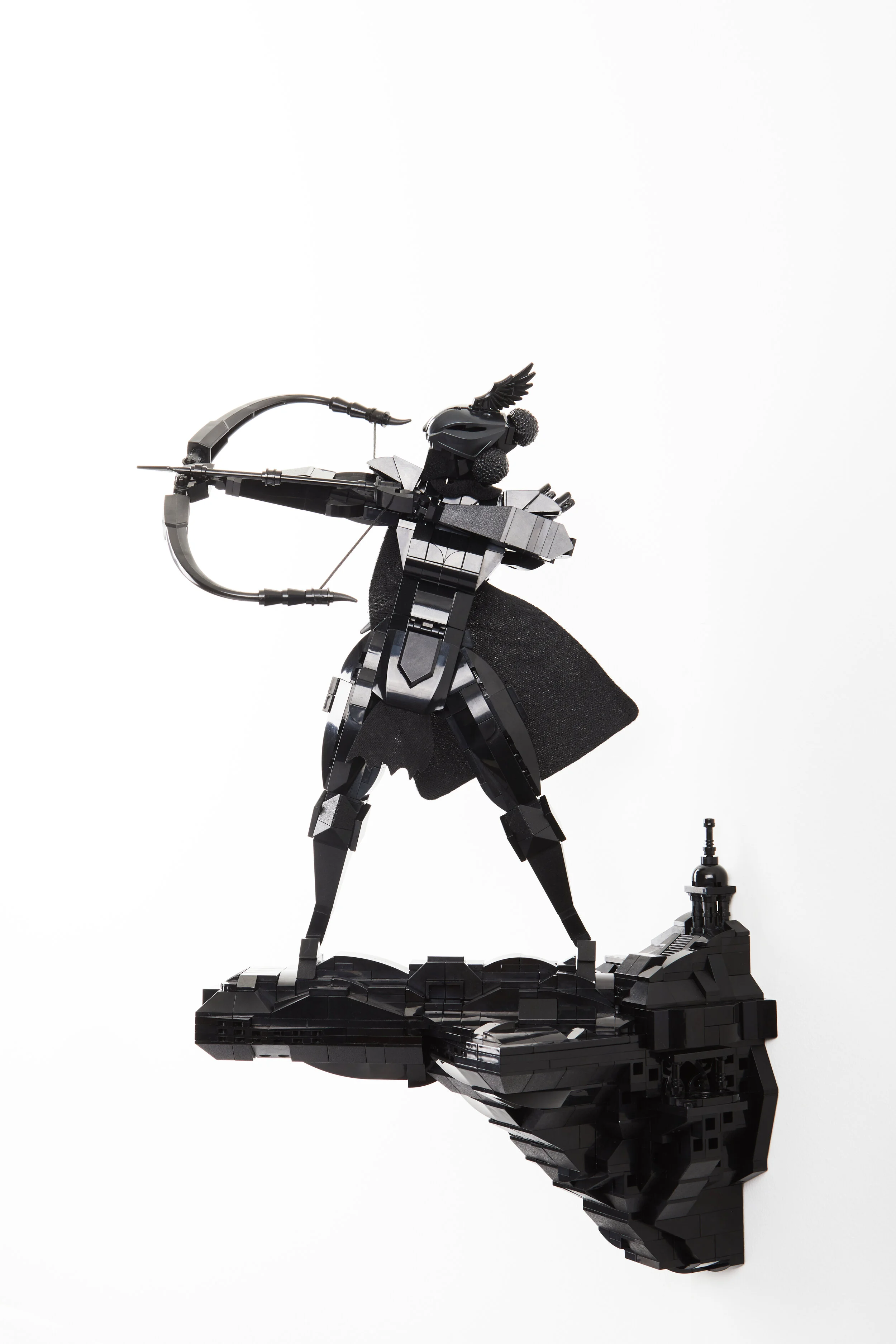Building Black: Ekow Nimako and Imagination
Ekow’s work is black. Literally and figuratively, black. A phantasmagorical future of West African inspired heroes and villains, caravans and communities populating an ancient future-city. All built with black Lego.
He’s been using Lego since the age of 4. He took a brief 10 year hiatus , completed half a fine arts degree at York University, and then dropped out to complete a novel. He rediscovered his love of Lego because of his daughters and turned it into his preferred medium.
He’s come a way since then and his work has been appearing at various galleries and public events in Toronto, including Nuit Blanche.
This particular exhibition is about Afro-futurism. What does a fantastical future inspired by West African history look like? His exhibit has a sort of steampunk vibe, if steampunk was African. It’s a dream world that changes the way you think about, well, thinking.
He creates these fantastically anachronistic Lego figures, humans and animals that populate the ancient and future city of Kumbi Saleh in 3020 CE; a city that has its roots in a medieval Ghanian empire. He puts himself in his pieces, both figuratively and literally. He was born in Montreal, before his family moved to Toronto, but ancestrally he is Ghanian, hence the West African influences in his work. His Lego collection dates back to his childhood and throughout his pieces you can find Lego blocks from the 80s. Literal pieces of his childhood. Probably sort of coincidental but it’s poetic nonetheless.
The sleekness of his figures is appealing on its own, and the novelty of seeing Lego statues in a deep midnight black aiming arrows at you or riding a life size horse is arresting. Despite dealing with complex themes, Ekow’s art doesn’t get trapped in its message. It’s engaging at every level.
Neither one of us is white, and we reflected on the way representation affected how we saw the world. There are no brown or black leading actors, at least there weren’t back when we were kids. Non-white characters always had some ethnic twist to them that sort of indicated how white writers saw us rather than how we really are. That fact alone shaped my choices and I think the same is probably true in some sense for Ekow.
The most interesting thing about this exhibit is the role identity plays in imagination. The way we think about the world, about the future and the past is, by and large, European. Just think about World War 2. My parents grew up in East Africa and India. The war affected them but only insofar as it affected their colonial master. It was a horrible thing but to people outside Europe and the Middle East, it was peripheral.
When Obama removed Churchill’s bust from the Oval office, it was a white guy scandal. How could he remove the bust of a man who helped save Europe? Churchill was also prime minister when a rebellion in Kenya was put down and Obama’s grandfather was reportedly tortured. He also purposely starved Bengal essentially murdering 2-3 million people. History doesn’t look great from the other side. Changing that narrative changes the way you imagine the past, and by default the future.
The same can be said about culture, which has been predominantly white. Black Panther was an important movie because of what it did for the black narrative, Ekow says. Finally, the story was told for and by the people it was portraying.
Ekow does the same thing for imagination. Instead of imagining a future that has become conventional—pseudo American/European take on science fiction—his exhibit changes the way you imagine. It’s kind of like when you learn a second language and you start dreaming in it, that’s when you know you’ve got it. The language of our imagination is culture, and Ekow is prompting us to dream in a new culture.
If there’s one thing he wants you to get out of this exhibit, it’s to expand your imagination about African civilization. That can be what you think the present looks like, reimagine history from the point of view of the African nations, or think about a future from a perspective other than your own. Creating and exposing alternate narratives expands the way we see the world, pushing our imagination even further. Ekow’s exhibit is one way to do that.
Ekow Nimako’s exhibit will be showing at the Aga Khan Museum Sept 21st, 2019 to February 23rd, 2020. The opening of Kumbi Saleh 2030 takes place on November 19th, 2019. For more information click here



